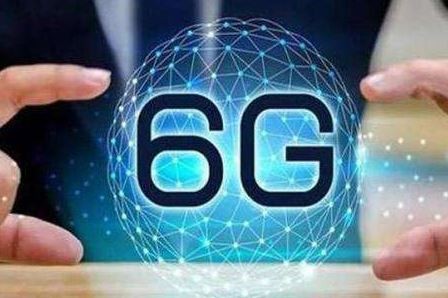据VentureBeat报道,随着5G网络在全球许多国家和城市不断扩张,关键研究人员已经开始为大约10年后的6G部署奠定基础。他们表示,这一次的关键卖点将不再是更快的手机或无线家庭互联网服务,而是一系列先进的工业和科学应用,包括无线、实时远程访问人脑级别的人工智能(AI)计算。According to VentureBeat, as 5G networks continue to expand in many countries and cities around the world, key researchers have begun to lay the foundation for 6G deployment in about 10 years. They said that this time the key selling point will no longer be faster mobile phones or wireless home Internet services, but a series of advanced industrial and scientific applications, including wireless, real-time remote access to human brain-level artificial Intelligence (AI) calculations.
New York University wireless research pioneer Dr. Ted Rappaport and his colleagues recently released the latest paper, focusing on the application of the 100GHz to 3THz wireless spectrum. As the previous generations of cellular networks continue to expand the use of the radio spectrum, from microwave frequencies to millimeter wave frequencies, the “submillimeter wave” range is the last available spectrum resource of seemingly safe, non-ionizing frequencies. These frequencies can be used in optical and X-ray frequencies. The wavelengths of gamma rays and cosmic rays were previously used for communication.
Dr. Rappaport’s team said that although 5G networks should eventually be able to provide speeds of 100Gbps, signal encryption technology does not yet exist and cannot exceed this speed. Even in today's millimeter wave frequency bands, a certain frequency band provides a bandwidth equivalent to a highway with 500 lanes. Therefore, opening the THz frequency will provide a huge new bandwidth for wireless use, enabling unimaginable amounts and types of data to be transmitted within one second.
Some of these things may sound familiar, because a similar remote control concept has appeared in the development of 5G, but it requires manual Operation. The key to 6G is that all these computationally arduous tasks will be completed by human-level AI, pushing large amounts of observation and response data back and forth. Researchers pointed out that by 2036, Moore's law indicates that computers with human brain computing power will eventually be purchased at a price of 1,000 US dollars, which is equivalent to the price of today’s high-end smart phones. Local early access to such computers becomes possible.
Of course, before 6G moves from theory to reality, there are still many major practical challenges that need to be overcome, including the miniaturization of core technologies and confirming whether the THz frequency is as safe as currently believed. In addition, like millimeter wave Transmission, sub-millimeter wave frequencies also require highly directional antennas, partly because they are very susceptible to atmospheric interference, especially at frequencies above 800 GHz.
In March of this year, the Federal Communications Commission (FCC) voted unanimously to open the 95GHz to 3THz frequency band for "6G, 7G or any next-generation network." However, the committee members stated that the speculative use of frequencies at that time made the voting akin to "making a zoning law for the moon." Based on past hisTory, in the near future, Dr. Rappaport and others will be at the forefront of transforming these concepts from science fiction to scientific facts.
How fast is the 7G network? It only takes 1 second to transmit data of ten human brains
纽约大学无线研究先驱泰德·拉帕波特博士(Ted Rappaport)及其同事日前发布最新论文,重点关注100GHz到3THz无线频谱的应用。由于前几代蜂窝网络不断扩大无线电频谱的使用,从微波频率到毫米波频率,“亚毫米波”范围是表面上安全的、非电离频率的最后可用频谱资源,这些频率可以在光学、X射线、伽马射线和宇宙射线波长之前用于通信。
拉帕波特博士的团队说,虽然5G网络最终应该能够提供100Gbps的速度,但信号加密技术还不存在,无法超过这个速度。即使是在今天的毫米波频段,其中某个频段提供的带宽相当于拥有500个车道的高速公路也不行。因此,开放THz频率将为无线使用提供巨大的新带宽,使难以想象的数量和类型的数据能够在一秒钟内传输完毕。
其中有些东西听起来可能很熟悉,因为类似的远程控制概念已经出现在5G的研发中,但它需要人工操作。6G的关键在于,所有这些计算繁重的工作都将由人类级别的AI来完成,将大量的观察和响应数据来回推送。研究人员指出,到2036年,摩尔定律(Moore 's law)表明,拥有人脑计算能力的电脑最终将能以1000美元的价格购买到,相当于今天高端智能手机的价格,6G将使从任何地方早期访问这类计算机成为可能。
当然,在6G从理论走向现实之前,还有许多重大的实际挑战需要克服,包括核心技术的小型化,以及确认THz频率是否像目前认为的那样安全。此外,与毫米波传输一样,亚毫米波频率也需要高方向性的天线,部分原因是它们非常容易受到大气的干扰,尤其是在800GHz频率以上的时候。
今年3月,美国联邦通信委员会(FCC)一致投票决定,为“6G、7G或任何下一代网络”开启95GHz至3THz频段。不过委员们表示,当时对频率的投机性使用,使投票类似于“为月球制定分区法”。基于过去的历史,在不就的未来,拉帕波特博士等人将站在将这些概念从科幻小说转变为科学事实的前沿。
7G网络到底有多快?只用1秒就能传输十个人脑容量的数据
